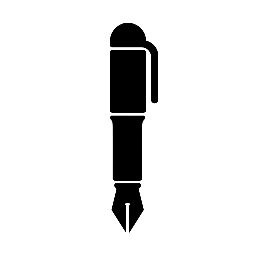Most theories can be dissected and analyzed. All theories will tell you something about their focus or unit of analysis. A theory will identify its major or key concepts. It will also point to the definition of the problem and its cause. This then guides how the social worker assesses and intervenes, because the theory will also articulate the role of the social worker and how change occurs.
Basic Assumptions of the Theory
Directions: For each section, respond in 2 to 3 sentences to the following prompts. Where relevant, provide citations to support your claims.
Name of theory
Systems Theory
Name of theorist
Ludwig von Bertalanffy
What are the major assumptions of the theory?
Systems are composed of interrelated subsystems that interact to maintain homeostasis; external inputs can disrupt balance, requiring adaptation for stability (Lund, 2024). Another core assumption is that behavior is always embedded within multiple ecological levels, including the person, group, organization, and community, and that a change to one part of a system will affect other parts (Jason & Bobak, 2022).
What are the theory’s key concepts?
Subsystems, boundaries, homeostasis, feedback loops, and open/closed systems. Other key concepts according to Jason and Bobak (2022) include the ecological levels of analysis and the dynamic co-evolution of relationships and individual characteristics over time, which can be studied through methods like social network analysis.
What is the theory’s focus or unit of analysis?
Interrelationships among systems, including individual, family, community, and societal levels. Other focus of the theory is on capturing the complex, dynamic interactions that occur within and between these levels, rather than isolating single variables.
What is the theory’s overall explanation for the cause of problems?
Problems arise from disruptions in system interactions or failure to adapt to environmental changes, leading to imbalance. For example, a problem can be caused by a breakdown in social network dynamics, such as seeking advice from individuals who reinforce negative outcomes, or by a failure of larger community systems to provide adequate support.
Application to a Case Study
Directions: For each section, respond to the following prompts. Where relevant, provide citations to support your claims.
In 1 to 2 sentences, how does the theory define the client’s presenting problem?
The presenting problem, which is homelessness and family abuse, is defined as a breakdown in the family system, where father’s alcoholism disrupts homeostasis and affects subsystems like parental roles and child safety.
In 1 to 2 sentences, how does the theory explain the cause of the client’s presenting problem?
The cause of the client’s problems is from external stressors (father’s job loss) cascading into internal family dysfunction, with community systems (e.g., lack of support) exacerbating isolation and abuse cycles.
In 1 to 2 sentences, how does the theory explain the role of the social worker for this client?
The social worker acts as a facilitator to assess and strengthen system connections, intervening at multiple levels to restore balance (Jason & Bobak, 2022).
In 1 to 2 sentences, what does the theory say about how this client will improve or how change will occur?
Change occurs through adaptive feedback, rebuilding family and community links to achieve homeostasis, such as through therapy and resources.
Using the theory, list two to three (2–3) assessment questions to ask this client to explore the client’s goals and how they will get there.
1. How have interactions with your family and homeless community influenced your sense of safety?
2. What community resources could support rebuilding family stability?
3. How do you envision changes in your family system aligning with your goals?
According to the theory, identify two to three specific practice intervention strategies for the client relative to the presenting problem. For each, explain in 1 sentence how it will help meet the client’s goals.
1. Family therapy: It restores communication and boundaries, promoting homeostasis.
2. Link to community services (e.g., housing support): It strengthens external subsystems for stability.
3. Peer group counseling: It builds positive feedback loops from chosen community.
Based on the theory, list two to three (2–3) outcomes when analyzing whether an intervention is effective.
1. Improved family interactions and reduced conflict.
2. Stable housing and community integration.
3. Client reports enhanced homeostasis.
What is one strength and one limitation in using this theory for this client?
A strength of the system’s theory is that it provides holistic view of family/community influences. One limitation of the theory is that it may underemphasize individual trauma.
Questions to Consider When Analyzing the Theory
You are not required to answer these questions for this assignment. However, these questions could help stimulate thinking whenever you are asked to analyze a theory.
To what extent does the theory apply widely to diverse situations? Or does it apply narrowly to particular situations?
Is the theory ethical? Is it consistent with the NASW Code of Ethics?
Is the theory congruent with the professional value base of the social work field?
How cost effective would it be to implement interventions based on the theory?
To what extent does the theory fit within the organization’s or agency’s philosophy?
What do research studies say about how effective the interventions are?
References
Jason, L. A., & Bobak, T. (2022). Using systems theory to improve intervention outcomes. Professional Psychology: Research and Practice, 53(4), 415. https://psycnet.apa.org/manuscript/2022-66701-001.pdf
Lund, I. A. (2024). A systematic review of the effects of cybernetic systems theory on innovation management. https://www.utupub.fi/bitstream/handle/10024/176962/Aurora%20Lund%20Pro-gradu.pdf?sequence=1
Would you like to discuss this project or get it done?
Reach out on WHATSapp at +1 (240) 389-5520
Or
Place an order on our website for quick help
Guarantees
A+ Paper
Timely Delivery
Zero Plagiarism
Zero AI


Leave a Reply